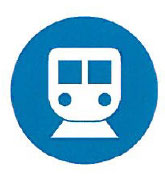Guided Pathways Four Pillars

Four Pillars of Guided Pathways
If we want different results, we need to design our institutions differently. Building a structure with the students and their end goals in mind results in everything we do being focused on helping students reach their self-defined goals, regardless of the level at which they arrived.

Create clear curricular pathways to employment and further education.

Help students choose and enter their pathway.

Help students stay on their path.

Ensure that learning is happening with intentional outcomes.
Clarify the Path
All programs are mapped (with the students' end-goal in mind) to transfer and career and include these features:
- Detailed information on target career and transfer outcomes
- Information on course sequences, critical courses, and recommended contextualized/ complementary general education and elective courses
- Mathematics and other core coursework are aligned to each program of study
Get on a Path
These supports will help ensure students get the best start (early momentum):
- Activities to help students explore careers, fields, and majors
- Redesigning the student onboarding experience
- Accelerated/Adaptive curriculum to ensure college-level credit as early as possible
- Full program educational plans
- Contextualized, integrated academic support in gateway and critical courses
- K-12 partnerships focused on career/college program exploration
Stay on a Path
To keep students on path, we want to utilize these supports:
- Ongoing, intentional academic counseling
- Technological tools for students to easily track their progress
- Targeted, contextualized extracurricular programming
- Building community by offering targeted programs and services
- Systems/procedures to identify students at risk and provide needed supports
Learn on the Path
To enrich and strengthen student learning:
- Program-specific learning outcomes
- Applied learning experiences
- Collaborative student engagement activities
- Faculty-led improvement of teaching practices
- Systems/procedures for the college and students to track learning outcomes
- Development of critical thinking skills